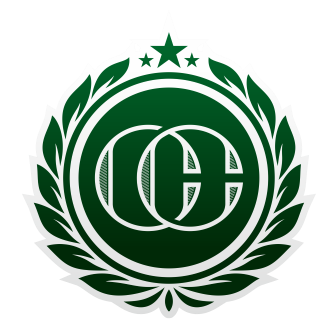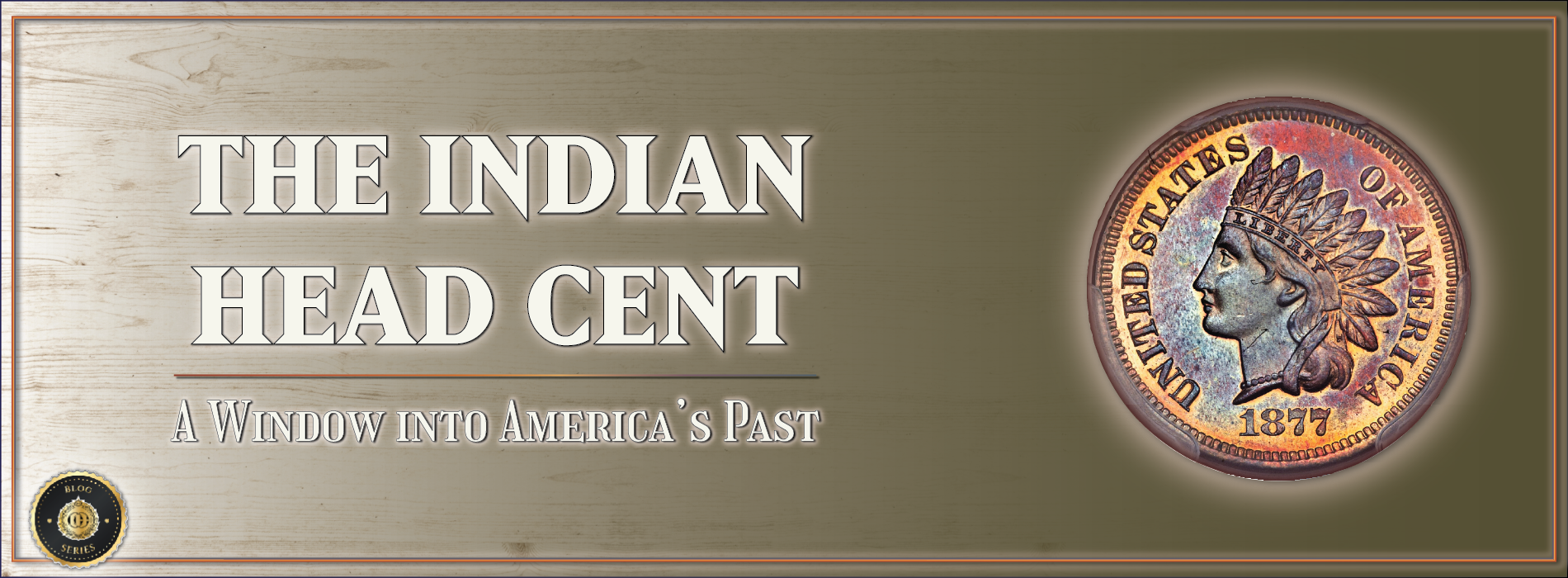
Few coins capture the spirit of 19th-century America like the Indian Head Cent. Minted from 1859 to 1909, this small copper coin circulated during a time of westward expansion, the Civil War, and the industrial growth that reshaped the nation. For many collectors, the Indian Head Cent is more than just a coin — it is a tangible link to the generations who carried it in their pockets during America’s defining moments.For today’s collectors — whether seasoned patriots who value history or beginners searching for an affordable start— the Indian Head Cent offers both historical significance and collectible value.
Get your Indian Head Cent Value Guide HERE
The Story Behind the Indian Head Cent
When the Indian Head Cent first entered circulation in 1859, America was standing at a crossroads. The nation was growing rapidly — railroads stitched east to west, factories reshaped cities, and tensions between North and South simmered toward open conflict. People needed coins for everyday trade, but they also sought symbols that reflected the country’s strength and ideals.
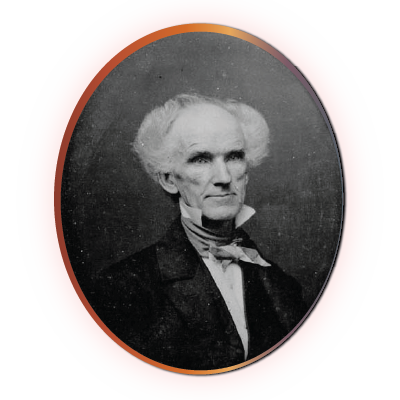
Enter James Barton Longacre, the U.S. Mint’s Chief Engraver. Longacre gave Lady Liberty a striking new look: a classical profile crowned with a Native American headdress. It was not meant to represent one tribe or individual, but rather a fusion of liberty and America’s frontier spirit. At a time when the nation was still defining itself, this design balanced tradition with progress — paying homage to Native imagery while embodying the democratic ideals of liberty and unity.
The first coins were struck in a copper-nickel alloy, giving them a pale, almost golden hue. But during the turmoil of
the Civil War (1861–1865), precious metals disappeared from circulation as people hoarded them for their intrinsic value. To keep commerce alive, the Mint shifted in 1864 to a bronze composition — 95% copper — giving the coin its familiar reddish-brown tone.
From there, the Indian Head Cent became part of daily life for nearly half a century. Farmers carried them in worn leather pouches. Soldiers spent them in bustling camp markets. Factory workers used them for streetcar fares or a loaf of bread.
Civil War Era: Hoarding and shortages made the cent one of the few coins people still trusted, its bronze composition holding strong when silver and gold vanished.
1870s–1880s: As peace and prosperity returned, the Indian Head Cent became the workhorse of American pocket change — as common as a handshake.
Early 1900s: By then, the coin was showing its age. To mark the 100th anniversary of Abraham Lincoln’s birth, the Mint introduced the Lincoln Cent in 1909, gracefully retiring the Indian Head after 50 years of service.
The result? The Indian Head Cent remains not just a collectible, but a story in copper — one that tells of a young nation’s struggles, triumphs, and enduring belief in liberty.
Key Dates and Rarities Collectors Pursue
Every coin series has its legends — pieces that stir excitement whenever they surface. The Indian Head Cent is no exception. Some dates became scarce not by design, but by the circumstances of history itself.
Take the 1877 Indian Head Cent. Struck during a time of economic hardship known as the Long Depression, the Mint produced fewer than 900,000 pieces — a fraction of its usual output. As railroads faltered and banks collapsed, everyday Americans simply didn’t need as many cents in circulation. Today, the 1877 is considered the crown jewel of the series. Even in worn condition, it can command hundreds or thousands of dollars — a survivor of hard times that shaped a nation.
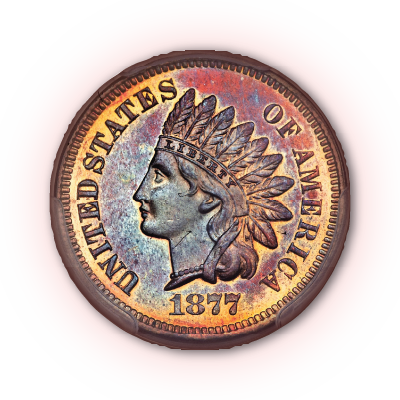
Another rarity is the 1909-S Indian Head Cent, struck in San Francisco during the coin’s final year of issue. By then, excitement was already building for the brand-new Lincoln Cent, which would honor the centennial of the 16th president’s birth. Production of the Indian Head series quietly wound down, with just 309,000 coins leaving the presses in San Francisco. This low mintage gave collectors a farewell issue of extraordinary scarcity, making it one of the most prized finds in American numismatics.
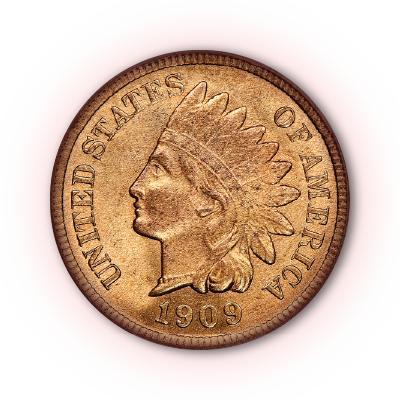
There are also the 1864 “L” cents, named for the tiny initial of engraver James Barton Longacre tucked into Liberty’s headdress ribbon. Produced in small numbers at the height of the Civil War, this subtle variation became a point of fascination for collectors who relish the stories behind the details.

Even common-date Indian Heads — coins from the 1880s or 1890s that once rattled in millions of pockets — hold special value in pristine condition. Brilliant red-toned examples, carefully preserved from circulation, can bring thousands at auction. To hold one is to imagine how it gleamed the day it left the press, ready to carry America’s commerce forward.
Why Collect Indian Head Cents Today?
For older collectors, the Indian Head Cent may spark patriotic pride, representing the resilience of a nation that endured war, industrialization, and growth. For beginners, the series offers affordability and accessibility — many circulated examples can still be purchased for just a few dollars.
Collecting these coins can also serve as a bridge between generations. Many veterans and fathers have introduced children or grandchildren to numismatics through the simple joy of holding an Indian Head Cent. Its design and history naturally invite conversations about freedom, sacrifice, and the American journey.
Tips for Building a Collection
Building an Indian Head Cent collection is much like piecing together America’s story, one coin at a time. Whether you’re a veteran collector who remembers finding these in pocket change decades ago or a newcomer eager to hold a piece of history, the journey can be as rewarding as the coins themselves.
Start with the everyday survivors.
Most collectors begin with the later dates from the 1880s and 1890s. These coins were struck in large numbers and are still affordable today, especially in circulated grades. They are the workhorses of the series, once used in country stores, train depots, and city markets. Assembling a run of these dates helps you build confidence while holding the same cents ordinary Americans used for a loaf of bread or a day’s streetcar fare.
Pay attention to Liberty’s headband.
A quick way to judge condition is to look at the word “Liberty” on Lady Liberty’s headdress. In higher grades, the letters remain sharp and clear — a sign the coin hasn’t been worn down by years of circulation. Collectors of the past often used this as a first test when sifting through pocket change.
Plan for the legends.
No collection feels complete without the 1877 and 1909-S, the keys to the series. These coins require patience and planning, but many collectors treat them as milestones — a reward for persistence. Think of them as the battlefield medals of the series: earned, not stumbled upon.
Seek out varieties with a story.
From the 1864 “L” cents to double-die obverses, these varieties connect you more directly to the engravers and minters of the past. They are whispers of history, tiny variations that slipped through the Mint but today inspire fascination.
Protect your investment.
Copper is beautiful, but it’s also fragile. Store your coins in archival-quality holders or albums to prevent spotting and toning. Generations before us often kept their coins in simple paper envelopes or cigar boxes — charming, but not ideal for preservation. Today’s tools allow us to protect these cents so they can be passed down intact.
In the end, collecting Indian Head Cents isn’t just about amassing coins. It’s about connecting to a living past. Each date you add to your album is another chapter in America’s story, preserved in bronze for generations to come.

